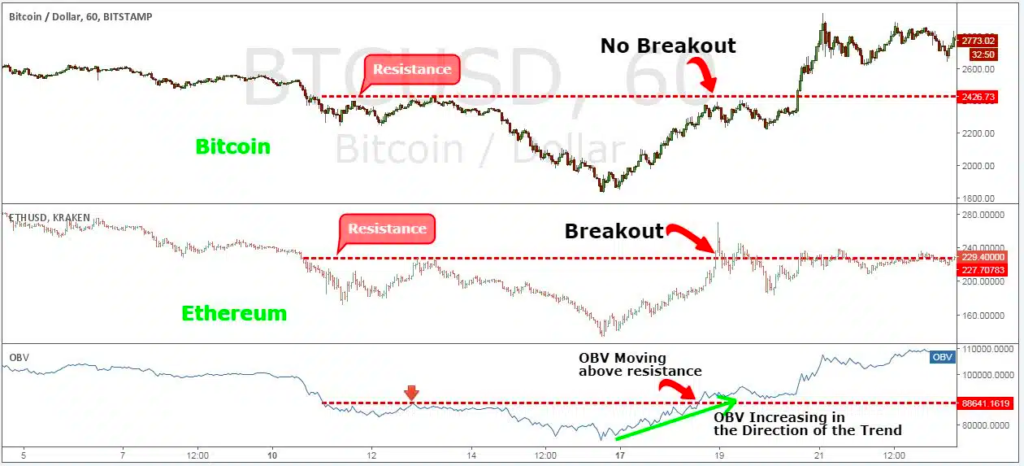

Today’s article is about teaching you one of the best strategies for day trading Bitcoin, the most traded cryptocurrency out there. However, if you’re completely new to trading, it is best that you familiarize yourself with the concept first and then get into trading strategies. With all that said, let’s begin!
The world is going digital right now, and there is nothing hotter in the digital world than cryptocurrency. Crypto has taken the world by storm in the past decade, and the price of Bitcoin reaches new heights in every bull cycle. The strategy we will talk about today is not limited to Bitcoin; it can be used for over 22,000 cryptocurrencies available for trading today.
How to start trading Bitcoin?
To start trading Bitcoin, you first need a cryptocurrency wallet. It provides you with unique addresses that you can use to deposit different types of cryptocurrency. There are various service providers that you can use to open your cryptocurrency wallet. Some of the popular service providers in the market right now are TrustWallet, MetaMask, and Coinbase.
Before you begin trading, it is essential to note that just like trading any other commodity or stock, trading cryptocurrencies also carries inherent risks. The market fluctuates constantly, and you can lose money if you’re not careful. Thus, use only the capital that you are willing to risk while trading Bitcoin because there are possibilities that you might lose some part of your investment.
Trading Bitcoin is not a piece of cake, and it requires the same amount of monitoring and constant surveillance that trading stock would. When starting out, you should play it safe, have realistic goals, and continuously educate yourself on the trends in the market.
Top exchanges for cryptocurrencies
There are a lot of options when it comes to cryptocurrency exchanges. Carefully considering the payment options is very important since some exchanges offer unique payment ways (ATMs, special portals) in certain countries.
Here’s a list of some top cryptocurrency exchanges:
- Coinbase is the world’s largest crypto exchange, available in the US, Canada, and Europe, with multiple payment options.
- Binance is the second-largest exchange, with over 130 currencies and low transaction fees.
- Bitmex is the third-largest exchange specializing in BTC, with short selling and margin trades.
- Bittrex is a US-based exchange founded by ex-Microsoft security professionals.
- Robinhood is a new exchange with zero trading fees and 6 million users.
- OKEx is a Hong Kong-based exchange with over 145 cryptocurrencies for trading.
- GDAX is a US-based exchange for Bitcoin, Ether, Litecoin, and other cryptocurrencies.
- Coinmama is a user-friendly exchange with a global reach and accepts credit cards.
You can pick the exchange that suits you better according to your region and requirements. You should also consider the limits of the exchange and the amount of liquidity it can offer, and also take a careful look at the payment options.
Fiat money vs. Cryptocurrencies
In today’s world, the only thing that truly separates the cash in your wallet from the digital crypto is the physical presence. In reality, both these currencies have no intrinsic value. Currencies gain value from government backing, and crypto gains value through the community’s trust.
However, many people think governments have unreasonable control over currencies. They control the printing of money. Thus they control the supply.
On the other hand, the supply of cryptocurrencies like Bitcoin is limited, and the amount at which new coins are minted constantly reduces over time instead of increasing. Therefore, cryptocurrencies are a better store of value than fiat money.
Now that we have seen the comparison of fiat money and cryptocurrencies let’s see how profitable trading is in Bitcoin and other cryptocurrencies.

Reasons to choose Bitcoin for trading
Traders have learned that Bitcoin is a profitable currency for various reasons. To name a few:
- Due to Bitcoin’s volatility, cryptocurrency trading is more thrilling than regular stock trading and may be more lucrative.
- Since Bitcoin can be exchanged around the clock, it offers more trading possibilities than traditional stock markets.
- Due to the minimal overhead costs, day traders who want to make large transactions without incurring considerable charges find Bitcoin trading tempting.
- Due to Bitcoin’s ongoing price swings, several trade possibilities appear daily.
Like traditional currencies, technical indicators can be used to predict likely price increases. Volume, relative strength, oscillators, and moving averages are all tools that can be applied to Bitcoin trading to increase the probability of making profitable trades.
How to trade Bitcoin?

You should always consider technical indicators and developing trends when trading Bitcoin. One popular approach is OBV trading, which stands for “On-Balance Volume”. It’s a momentum indicator that uses volume flows to predict changes in the stock price. By understanding OBV trading, you can start trading cryptocurrencies more effectively.
Let’s get down to getting into the details of OBV. Before that, we want to remind you that this strategy is just as valid for other top cryptocurrencies as it is for Bitcoin. For example, you could also use it to trade Ethereum, the world’s second most well-known and well-used cryptocurrency.
The trading strategy we will talk about right now will be based 85% on the price action and 15% on the strategy using the indicator.
The technical analysis tool, On-Balance Volume (OBV), tracks the positive and negative volume flow in a particular asset, in this case, Bitcoin. OBV trading is a well-liked method as it offers information about price changes and aids traders in making wise choices. If the closing price of the asset increases, the volume is added to the indicator; if the closing price of the asset lowers, the volume is subtracted.

If Bitcoin is trading up and at the same time the OBV is trading down, this is an indication that the move to the upside wouldn’t be sustainable. The same is true in the opposite case if Bitcoin is trading down and, simultaneously, the OBV is trading up. What really matters is that OBV should move in the same direction as the Bitcoin price.
An important thing to note is that technical indicators don’t work 100% of the time. You should always collect more information and never rely on only one indicator to guide you.
The best Bitcoin strategy for trading
We will outline the Bitcoin trading strategy in easy-to-follow steps.
Step 1: Set up BTC and Ethereum charts with OBV indicator

You will need three windows for this part. One for the BTC chart, one for the Ethereum chart, and the last for the OBV indicator. You can use any charting website that you are comfortable with. Let’s move on to the next step.
Step 2: Look at the divergence between Ethereum and Bitcoin price

If Ethereum and BTC charts show similar price action, all is well and good. But sometimes, the charts diverge.
For example, Bitcoin doesn’t break through the resistance level, and its price falls. However, Ethereum broke the resistance level instead of following Bitcoin and started rising. In this scenario, one of the cryptocurrencies is “lying”. This gives us an opening to start your trade. But you need confirmation from the OBV indicator to do so.
Step 3: Look for OBV in the direction of the trend

If OBV is moving toward the trend, in this case, Ethereum’s price increase, we have our signal to open UP trade. However, note that OBV should also see a breakout when Bitcoin reaches the resistance again to confirm the scenario indeed.
If the OBV indicator confirms the trend in the direction of Bitcoin’s price decline, it’s time to initiate the DOWN trade. However, it’s crucial to ensure that OBV also sees a breakout when Ethereum reaches support again to confirm the scenario.
Bitcoin trading rules
Bitcoin trading can be risky, but there are many ways to reduce the risks and enhance your strategy. Here are some tips to help you get started.
- Diversify your trades
Instead of focusing solely on Bitcoin, consider trading other cryptocurrencies like Litecoin, Ethereum, etc. Diversifying your portfolio will help reduce the daily risks associated with a specific coin. This way, if Bitcoin falls, your portfolio can still be balanced out by the other cryptocurrencies.
- Minimize trading costs
Choose a trustworthy exchange or platform with low or zero fees to minimize the cost of trading.
- Watch trading times
Bitcoin trades 24 hours a day, seven days a week. It’s essential to plan out your trading times based on your schedule and when the market is most active. This can help you make informed decisions and avoid trading during periods of low liquidity.
- Follow Bitcoin news
Stay current on cryptocurrency news stories to stay ahead of the market. Set up alerts and notifications to receive real-time updates on price movements, new regulations, and other market factors that could impact your trades. This information can help you make better decisions and stay ahead of the curve.
- Use technical analysis
Technical analysis can help you identify patterns and trends in the market and make more informed decisions. OBV is a popular indicator that tracks the cumulative volume of trades and can help you determine whether buying or selling pressure is increasing or decreasing.
The bottom line
A Bitcoin trading strategy is a plan of action to help you trade at the most appropriate time to maximize profits and minimize risk. It helps you make informed decisions based on market data, stick to your trading plan and avoid trading impulsively. It is also important to remember that cryptocurrency trading involves risk, and you should never invest more than you can afford to lose.









